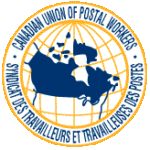MP: Importance of testing for and reducing radon levels in homes and workplaces
As many may already be aware, the Kootenays have a combination of geology and gas permeable soils that make homes and workplaces susceptible to high concentrations of radioactive radon. It surprised me to learn that the radiation from radioactive radon gas found in homes and workplaces is estimated to cause 16 percent of the lung cancer cases across Canada resulting in more than 300 deaths per year in BC alone. In fact Castlegar has one of the highest household radon levels in British Columbia!
Radon gas, produced from the natural decay of uranium found in rock, is odorless, invisible and can only be detected through testing. This radioactive gas can enter homes from anywhere that the house is in contact with the ground, regardless of whether it has a basement, a crawl space or is built on slabs.
Testing for radon levels in your living and working environment is critical because the risk of developing lung cancer will depend on the level of radon and your length of exposure to those levels. Because radon and tobacco smoke have a synergistic relationship smokers bear a significantly greater risk. Children are also more vulnerable if exposed to radon early in life because they have a longer time in which to develop lung cancer.
Health Canada recommends that houses be tested for a minimum of 3 months, ideally between September and April when windows and doors are typically kept closed. New energy efficient homes are particularly susceptible to high radon levels.
No level of radon is considered harmless and there are effective and inexpensive things that can be done to reduce it:
· Ventilate the basement sub-flooring by installing a small fan to draw the radon from below the concrete slab and vent it outside before it enters the home or building.
· Improve ventilation or air flow (natural or forced) of crawl spaces, basements and other areas on the lower levels of the home or building by opening windows or using ceiling fans.
· Seal cracks and openings in basement floors and walls, and around pipes and drains.
As of December 2014, Provincial Building Codes require all new homes in the areas of BC with high radon potential to have venting of the foundation and will allow inexpensive enhanced venting using a fan to be installed.
Having lost his wife to radon induced lung cancer in January of 2013, Castlegar resident Dana Schmidt has been tireless in his efforts to inform folks in our area of the hazards of the invisible gas. The charitable society he has founded, “The Donna Schmidt Memorial Lung Cancer Prevention Society”, distributes free radon detectors in the Kootenays.
I strongly urge everyone to become better informed and ensure they are not being unduly exposed to this quiet killer. Comprehensive Information about radon, including testing and remediation protocols, is easily found on the Health Canada and BC Government websites. For those without access to the internet my office will be happy to help out. Call TF 1-800-667-2393 OR 250-365-2792

























